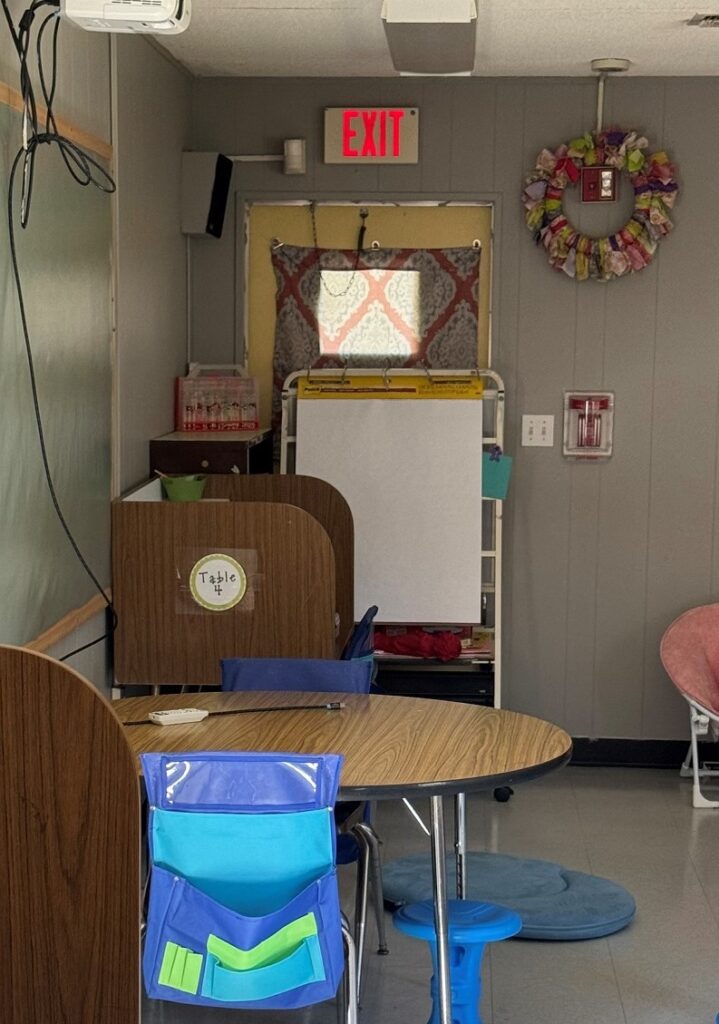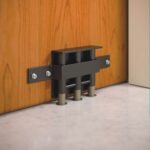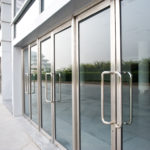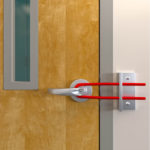 Joe Hendry of Navigate360 sent me today’s Wordless Wednesday photo, taken in a school classroom. Clearly, it is a marked exit that is blocked with stored materials.
Joe Hendry of Navigate360 sent me today’s Wordless Wednesday photo, taken in a school classroom. Clearly, it is a marked exit that is blocked with stored materials.
But I’ve been trying to be more intentionally curious these days, so I’m wondering…under what circumstances would this classroom require a second exit? Whether we’re talking about a connecting door between classrooms, or a secondary exit leading directly to the exterior, when are these openings required to comply with the codes?
How do we know whether a second door in a classroom is for convenience, or whether it is provided for egress purposes? Knowing the difference between the two is the key for choosing the correct hardware – particularly for the doors between classrooms.
I have some ideas, but first…tell me what you think.
You need to login or register to bookmark/favorite this content.










Not enough info
1. What grade children are using the room
2. What age children are using the room
3. Is it a day care or full school K-12
4. What year was it a school
5. What building code and year edition
6.sq ft of room
7. Sprinkler system
Just a start
Since this is a marked EXIT, it probably has over 50 occupants, which means two exits are required (with panic devices). A more “typical” classroom with say 30 students would only need a single unmarked exit, often inswinging. Technically an unmarked second door (like a connecting door) in that case would not be uncompliant if blocked. However a second exit directly to the outside, even if unmarked, may nevertheless be be required for other reasons (such as an unsprinkled one-story school with unrated corridors). In any case, any door with an EXIT sign is considered required, so if by further code analysis it is not, they may want to remove the exit sign.
With only the limited look, my first thought was it is provided as the alternative to sprinklering the building per the Exception to 903.2.3. this has been an exception for many years.
In the Fire Code, section 903.2.3, Group E occupancies have an exception to the installation of fire sprinkler systems. “In buildings where every classroom has not fewer than one exterior exit door at ground level, an automatic sprinkler system is not required in any area below the lowest level of exit discharge serving that area.”
With an exit sign and pull station it certainly appears as a designed exit. A other have said there are many unanswered questions regarding todays use of the room. If this is in a state that has any kind of building code then the answer is clear – it is an exit. If usage does not require it to be maintained the users do not get to decide this, or block it. By firing point procedure the AHJ would be consulted, approve the request to remove this as a required exit, and then allow the signage to be removed. Marked exits are required exits until AHJ approval is given and the signage remove.
First thought is: Yes it’s required as it is a marked exit. if it’s no longer needed it and not going to be used, then remove the signage, but a marked illuminated exit is a “required exit” in my book. As noted above, the size of the space likely drove the need, possibly a classroom then changed to another use, that lowered the OL, but again, since it’s still marked, that indicates that the details are not completely worked out. Also noted are the exceptions and “deals” made between the AHJ and the builder, architect and owner, sometimes things don’t get 100% compliance but alternatives are required, thus without the full story, I would never say something is “not required”.
From what I can see, this appears to be a modular type classroom. They are common as temporary (forever) classrooms adjacent to schools for more space. The ones that I see and inspect are usually provided with a state certification. They include two exits (outside) for each classroom with panic hardware, portable fire extinguishers, battery powered egress and exit lighting, and a stand alone fire alarm system with a cellular type unit to signal a central monitoring location.
They might be a one size fits all approach for quick affordable deployment to expedite permitting and minimal site prep.
From my standpoint as a fire safety inspector, if it comes with a life safety component, it all works as designed or a notice to correct is issued.